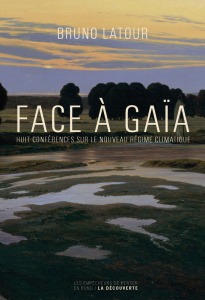What is it that ensures the objective existence of a reality that you believe in, whether it be God, the Virgin Mary, a Saint, or whatever? Does it not follow a trajectory, does it not perform a movement? Is this not the basis of its rationality?
So religion as a mode of existence is a mediated phenomenon.
But there is also a second aspect to consider. This is Latour’s claim that mediation ‘ensures the objective existence of a reality that you believe in’. In other words, for Latour, the idea of religion as a materially and historically embedded phenomenon, with its own specific felicity conditions, in no way implies the compromise of its status as objective and real. Hence, his repeated insistence that religion as a mode of existence constitutes a ‘regime of truth’. This countermands the charge of relativism that has been occasionally leveled against him. Martin Holbraad, for example, interprets Latour as seeking to ‘lift the lid on the false dominion of religion as representational discourse’:
Latour’s game is to show that, if you look closely and carefully enough, all that seems like rupture is in fact continuous, so that even terms that seem like digital negations of each other (either man or God, word or world) are really ontological transformations of one another, related on a monistic plane by what French philosophers sometimes call ‘difference’. (Holbraad, 2004, ‘Response to Bruno Latour’s Thou Shall not Freeze-Frame’, p.4).
Holbraad’s critique is mistaken. Latour does not collapse religion into relativism. His claim is quite the opposite. For him, it is precisely because it is grounded in the immanent procedures of ontological pluralism that religion is able to claim for itself the status of rationality. Latour makes this clear in his spiritual autobiography Rejoicing—a book of which he claims without irony that ‘c’est pour moi le livre le plus scientifique que j’ai écrit’ (my trans. ‘for me, it is the most scientific book that I have written’, in Latour, 2008, ‘Pour une Ethnographie des Modernes’, p.7)—where he asserts that ‘the things I’m talking about are not irrational but require all our reason, the sole and only reason we have to survive with’. (Latour, 2012, Rejoicing, p.68). Comparable statements are found elsewhere. Of course, Latour is not absent-mindedly re-inscribing into religious discourse the version of apodictic certainty that is sacred to Modernity. That would be to replicate an epistemology that Latour has already deconstructed as artificial and hegemonic. Rather, what is in view here is a definition of religion as that which is characterised by a universal value, a value that is nevertheless secured by the movements of actors within the space and time of this world. ‘Value’ is a technical term within the Inquiry. It refers to that which is generic, regulative and stable about a mode of existence, that is, everything that qualifies it as a ‘regime of truth’. Latour’s objective is to identify the value that is specific to religion as a mode of existence. It is on this basis that he will ultimately argue for the re-instatement of religion as a public institution, as something ‘capable of producing unity and agreement’ in the world (Rejoicing, p.61).
I began with an apparently incidental statement uttered by Latour in our personal interview. ‘What is it that ensures the objective existence of a reality that you believe in, whether it be God, the Virgin Mary, a Saint, or whatever? Does it not follow a trajectory, does it not perform a movement? Is this not the basis of its rationality?’ I propose that the originality and provocation of Latour’s work is found right there. Latour describes religion as arising via a local and contingent agency configuration, such that it is dependent on specific felicity conditions. And yet what arises nevertheless constitutes general and universal truth. The combination of these two requires no clever dialectic. Latour’s claim is simply that the value of religion arises through the mechanism of the actors who produce it in the space and time of this world. To put it in his own words, ‘religion is a full-blown mediation, a form of life, with its own form of judgment, its own canon, its own empirical world, its own taste and skills; and yet also where truth and falsity, faithfulness and infidelity are carefully detected, measured, proved, demonstrated, elicited’ (Latour, 1996, ‘How to be Iconophilic about Art, Science and Religion’, p.429).


